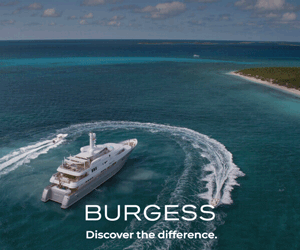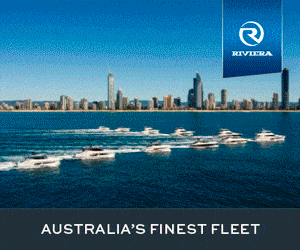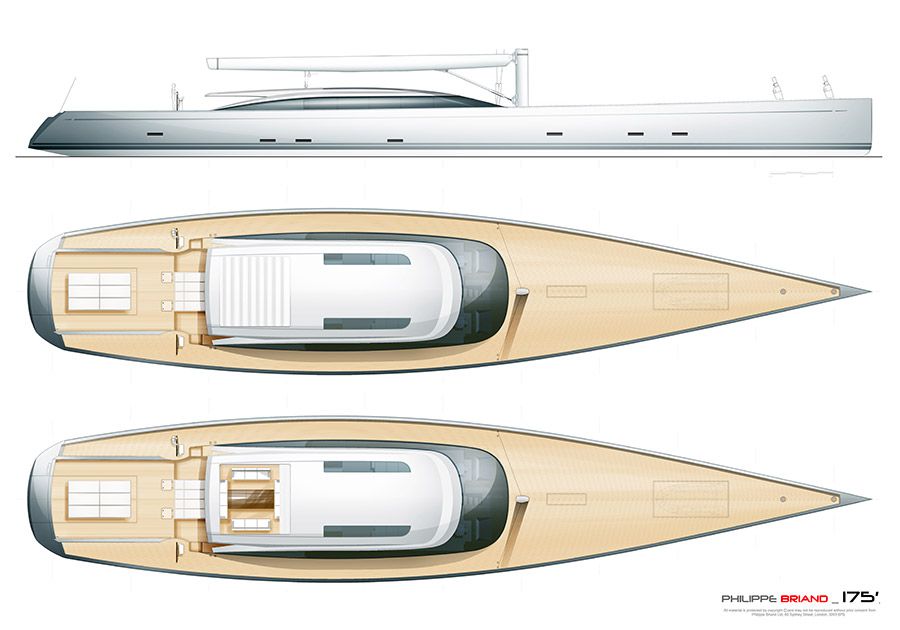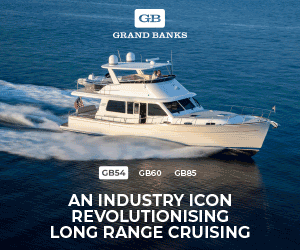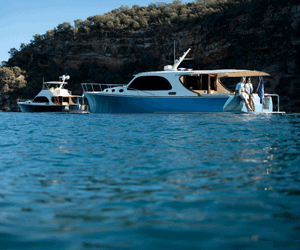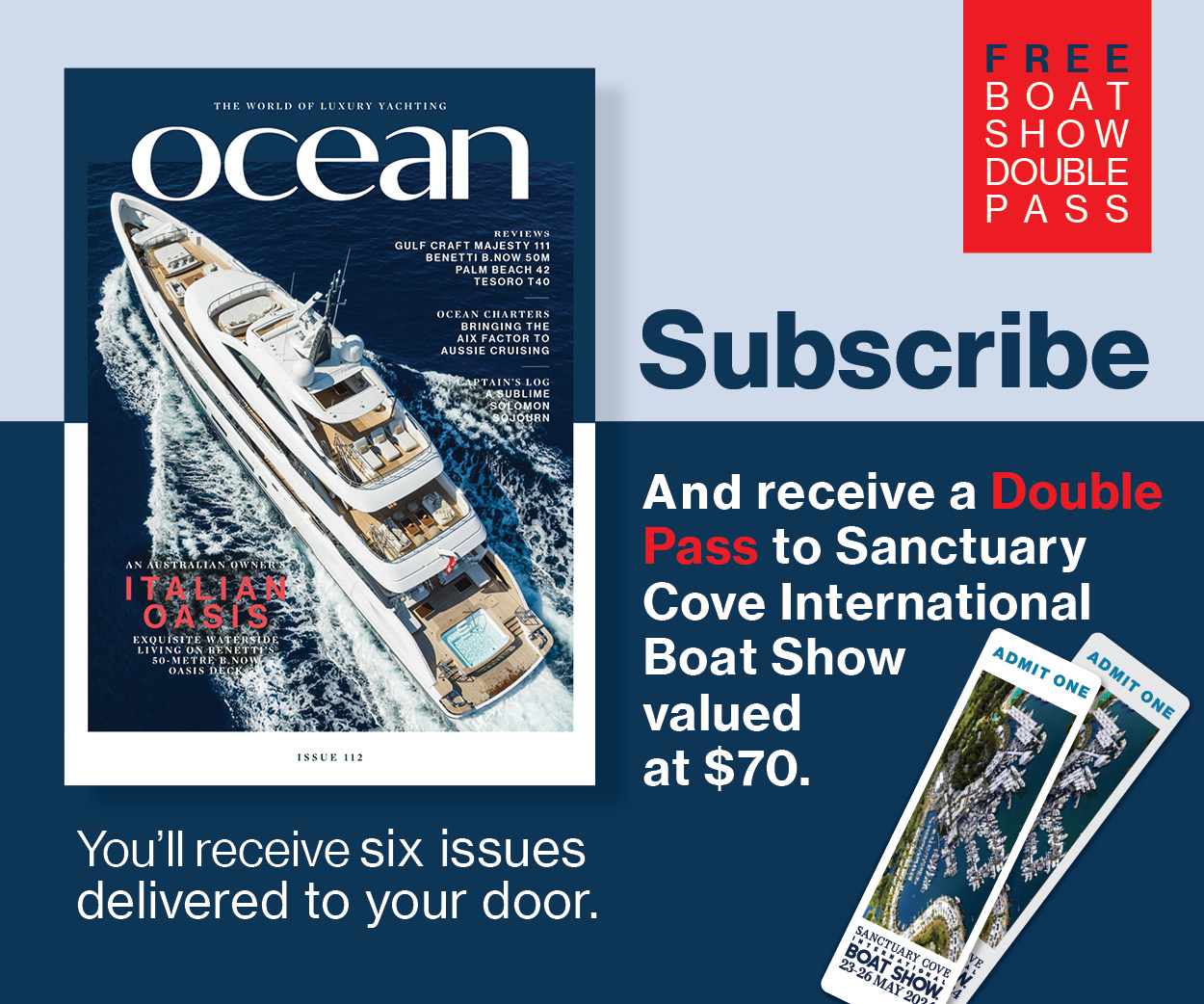Explore the world
The Vitruvius Expedition Range is exploring the boundaries of yacht function and form.
10 October 2017
Today’s owners want more diversity from their yachting platform, so Vitruvius Yachts has created a new range of yachts that will offer a variety of design choices for owners, whether they are looking to stay in more familiar ports or to explore the world’s most remote waters.
With its bold new range of concepts, Vitruvius Yachts has created a boundary-breaking manifesto for the way yacht design and capability is defined, offering clients a choice of concepts spread across a spectrum of solutions for their cruising needs.
As uses for superyachts are evolving, and becoming more diverse, so should the designs reflect this variety. Vitruvius Yachts has a function-led approach to yacht design, as opposed to a form-led method, which is visible in the success of past deliveries Exuma and Galileo G.
“Our team is driven by pushing the frontiers of yacht design,” said Philippe Briand, designer and naval architect at Vitruvius Yachts. “Of course, the needs and functions of expedition yachts, explorers and Mediterranean yachts would at first seem independent of one another. But there are clear intersections where we can create solutions that span multiple categories.”
To illustrate the approach of flexibility in form to meet function, the studio has developed a range of expedition yachts with a distinct Vitruvius Yachts hallmark in design and performance, but which find themselves along a spectrum of optimum function, from Mediterranean yacht through explorer yacht to full expedition yacht.
Whereas the design of a Mediterranean-style yacht is led by comfort and aesthetics, the design of an explorer or expedition yacht starts with its naval architecture. The new range of Vitruvius Yachts concepts proves that an owner can have the best of both worlds, choosing how much ‘Mediterranean’ they would like to mix with ‘explorer’ and ‘expedition’. The comfort, space and luxury of a Mediterranean yacht can be combined with the long-range efficiency and rugged capabilities of an explorer. The range includes six motoryachts of similar size, from 45 to 50 metres, as well as a 55-metre explorer sailing yacht under the Philippe Briand brand.
“We understand that today’s owners want to use their yachts to host glamourous parties on the French Riviera or the Greek Islands as well as venture to remote Pacific islands or even the polar regions. In response, we have created a collection of concepts that showcases the iterations transitioning from expedition to explorer to Mediterranean yacht.
“It helps an owner to visualise where they would like to place their yacht in terms of capabilities across different environments,” added Briand.
The Scientific Style Expedition is the most rugged of the designs, with space for two nine-metre tenders, toys or a sailing boat on the aft deck. Available as an efficient, aluminium-hulled 50-metre yacht or a 45-metre steel-hulled, Ice Class yacht, it has the distinctive low-profile features of past 50-metre-plus Vitruvius yachts Galileo G and Exuma.
The upper observation deck is perfect for whale spotting or watching wildlife at the shoreline and, with a full-beam owner’s suite on the main deck forward, a range of reception areas and a large capacity for tenders, it is the ultimate luxury expedition yacht.
An alternative variation of this yacht in the same proportions and hull materials is also available with a two-level garage layout, which also features a helipad for additional adventurous travel. It also allows the aft deck to be used as a social space while the tenders are stowed in the lazarette beneath.
The Expedition Beach Club concept, available as a steel, 45-metre Ice Class yacht, has a lowered engine room position, allowing for the lazarette to be converted into a beach club for on-water entertainment.
The Explorer concept, also available as a 50-metre aluminium yacht or a 46-metre steel yacht with Ice Class hull, has space under the foredeck for stowage of further tenders and multiple toys. These are accessed via gull-wing doors on each side of the yacht.
The 45-metre Crossover concept combines the capabilities and aesthetics of Vitruvius’s explorer yachts with leisure and social aspects of a more traditional superyacht. It is available as an efficient aluminium-hull yacht or Ice Class steel hull. The foredeck has been fully exploited to provide ample seating and sun pads for enjoyment at anchor or underway, and an extended saloon and aft deck will be popular relaxation spaces.
The 50-metre Expedition Mediterranean concept bears all the hallmark elements of a Vitruvius Yacht, including balanced superstructure, contemporary lines and efficient hull for long-range cruising. It also brings new dimensions to a yacht’s operational versatility. The aft section of the Expedition Mediterranean has been maximised in order to stow large, robust tenders and toys in the lazarette for such exploits away from the mothership. Adding glamour and comfort, the main aft deck features an optional infinity pool to starboard with a fold-down beach terrace on each side of the yacht. There is also ample space for social gatherings or toys to assist in exploration.
“We are very excited by the new yacht concepts in this boundary-crossing range,” said Veerle Battiau, General Manager at Vitruvius Yachts.
“The designs include varying combinations of expedition yacht features – such as a large garage, a long aft deck and helipad – with the efficient hull of an explorer and the exterior leisure space, interior comforts and access to the sea of a Mediterranean yacht. The yachts break the conventional design barriers.”
The choice between a motoryacht and a sailing yacht does not have to mean sacrifice of function, nor the loss of space and luxury. Under his sailing brand Philippe Briand, the designer has also created a 55-metre superyacht that represents the capabilities of exploration under sail.
The yacht design was first inspired by a brief from a Californian yacht owner who was seeking long-range explorer for cruising in the Pacific Ocean. The essential criteria included a high maximum speed, an open, inside-outside style of living space, large tenders of up to 6.5 metres for trips ashore in remote areas, and a sizeable lazarette that converts to a beach club or fitness centre.
The owner was seeking many of the features that are usually associated with motor-yachts – namely space and plenty of tenders and toys – but wanted a sailing platform.
The design emphasised a “purity” in the sense that, both under sail and motor power, it would have low carbon emissions thanks to integration of a high-tech propulsion system for when conditions prevented use of the sails.
To enhance the sense of closeness to the ever-changing surroundings, this purity extends to a transparent superstructure.
Technical features include a highly stable hull for reduced rolling and superior performance through advanced naval architecture to deliver a sailing speed of between 12 and 14 knots, which is comparable to motor-yachts in this size range. Innovative technology would deliver new ways to control and hoist the sails, while a lifting keel would minimise the draft of the yacht, allowing it to cruise in shallower waters like a motoryacht. The building cost for the sailing yacht would be comparable to a motor yacht of the same size, said Philippe Briand.
“There are a lot of stereotypes in yachting that are not actually true. A sailing yacht is not only for performance and racing. It can be just as suitable as a motoryacht when it comes to exploration, even with a touch more elegance,” he added.


